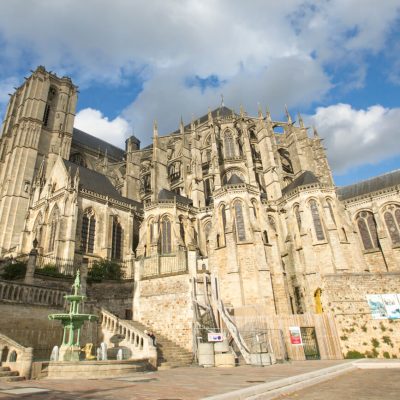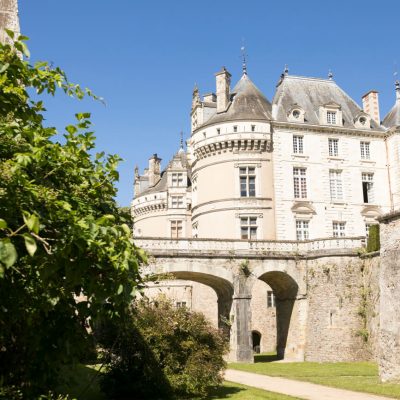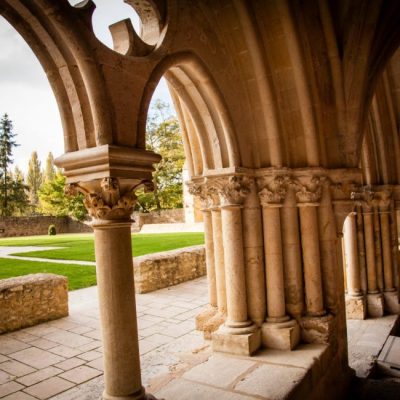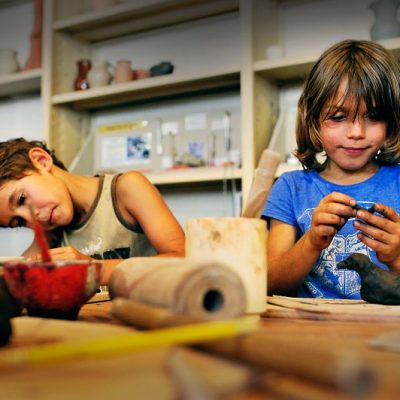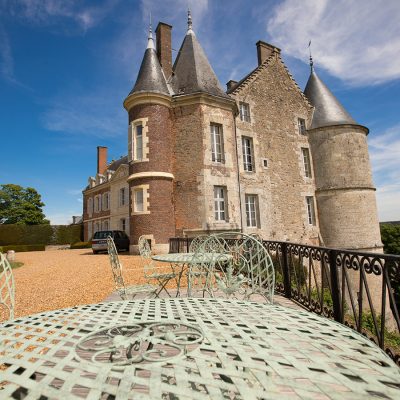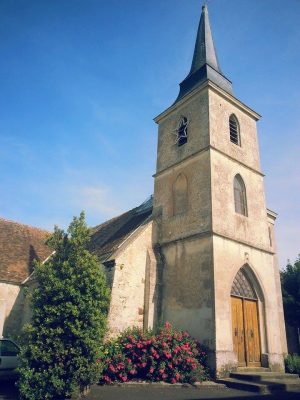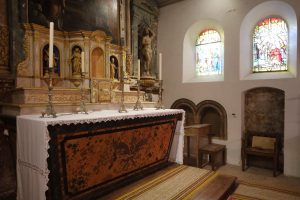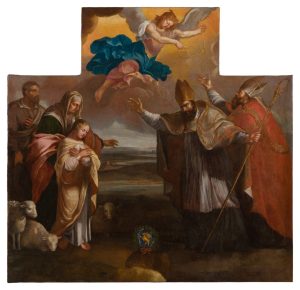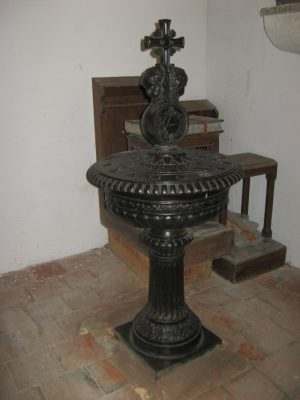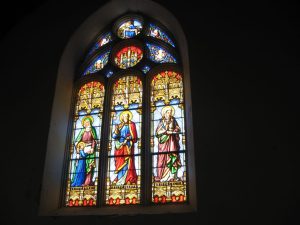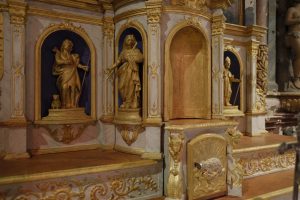Originally Romanesque, the church at Louvigny has undergone a number of transformations over the years. The altars and altarpiece were donated in the 18th century by François Thébault, a wealthy donor born in Louvigny. A commemorative plaque has been erected in his memory in the church sacristy, after it was found in the late 19th century by Abbé Chartrain, the parish priest at the time, on the roof of his presbytery, in the place of a tile. It is likely that this was to save it from being looted during the Revolution.
The soaring bell tower dates from the 19th century. It replaced a bell tower. The 19th century also saw the installation of the stained glass windows, the Way of the Cross and the baptismal font. Usually made of stone, these are highly original, as they are decorated in the style of Napoleon III, the period in which they were made, and are made of cast iron, undoubtedly a fine example of the industrial production of the time.
The typically Romanesque portal is preceded by two steps with an eight-pointed star and a cross. This is perhaps a summary of the life of Christ, from the Nativity Star to the Crucifixion.
A number of listed items have been restored in recent years, thanks to subsidies from the French government and the Sarthe département, as well as the generosity of contributors to the Fondation du Patrimoine.
For example, the remarkable gilded wood tabernacle of the high altar. Painted in faux marble in the 18th century, it is one of the largest tabernacles preserved in Sarthe.
The painting just above it, also superbly restored and attributed to François Mongendre (1644-1690), depicts Saint Germain d'Auxerre meeting Saint Geneviève as a child.
The church in Louvigny is a beautiful village church. Surrounded by a typically village square, beautifully laid out and decorated with foliage and flowers, it was once surrounded by the cemetery, which was transferred to the edge of the village in the 19th century.

